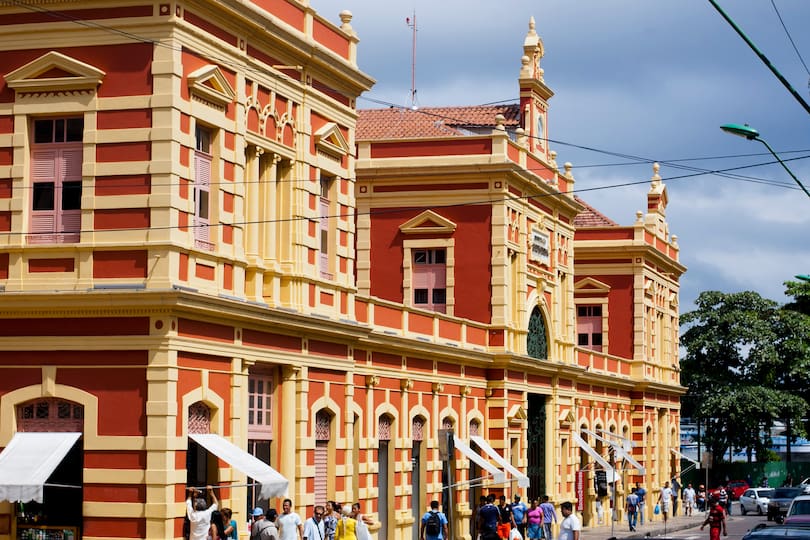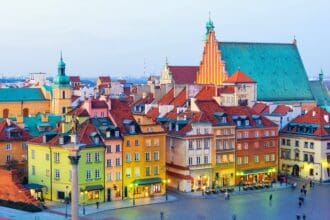Nestled in the northeastern corner of India, Mangan is a picturesque town located in the North District of Sikkim. Surrounded by lush green hills, cascading waterfalls, and snow-capped peaks, this charming destination offers an unparalleled experience for travelers seeking solace amidst nature. Known as the gateway to North Sikkim, Mangan is not only a hub for adventure enthusiasts but also a treasure trove of cultural heritage and spiritual significance. In this article, we will delve into the top 5 places to visit in Mangan , uncovering their unique charm, hidden gems, and why they deserve a spot on your travel itinerary.
1. Seven Sisters Waterfall: Nature’s Masterpiece
A Symphony of Water and Rocks
The Seven Sisters Waterfall , one of Mangan’s most iconic landmarks, is a breathtaking natural wonder that captivates visitors with its sheer beauty. Located along the winding roads leading to North Sikkim, this multi-tiered waterfall cascades down a rocky cliff, resembling the graceful flow of seven streams. The sight of water gushing through the rugged terrain creates a mesmerizing spectacle, especially during the monsoon season when the falls are at their peak.
Surrounded by dense forests and vibrant flora, the Seven Sisters Waterfall offers a serene environment perfect for nature lovers and photographers. The sound of rushing water combined with the chirping of birds creates a symphony of sounds that soothes the soul. Visitors often stop here to take in the view, capture stunning photographs, or simply enjoy a moment of tranquility.
Exploring the Surroundings
While the waterfall itself is the main attraction, the surrounding area is equally enchanting. Trekking trails lead deeper into the forest, offering opportunities to explore the rich biodiversity of the region. Keep an eye out for exotic bird species and rare plants that thrive in this pristine ecosystem. For those who prefer a more relaxed experience, picnic spots near the base of the falls provide a perfect setting for a leisurely meal surrounded by nature.
“The Seven Sisters Waterfall is a reminder of nature’s raw power and beauty, leaving visitors awestruck and inspired.”
Why Visit the Seven Sisters Waterfall?
This natural marvel is a must-visit for anyone traveling to Mangan. Its accessibility, combined with its awe-inspiring beauty, makes it a favorite among tourists. Whether you’re a photographer, a nature enthusiast, or simply someone looking to escape the hustle and bustle of city life, the Seven Sisters Waterfall promises an unforgettable experience.
2. Tashi Viewpoint: Panoramic Views of the Himalayas
A Window to the Mighty Kanchenjunga
Perched on a hilltop overlooking Mangan, Tashi Viewpoint is a popular destination for travelers eager to catch a glimpse of the majestic Kanchenjunga range. This vantage point offers panoramic views of the snow-clad peaks, including Mt. Kanchenjunga, Mt. Pandim, and Mt. Siniolchu. The early morning mist rolling over the mountains adds a mystical aura to the landscape, making it a photographer’s paradise.
The viewpoint is particularly famous for its sunrise vistas, where the first rays of sunlight bathe the peaks in golden hues. Visitors often arrive before dawn to witness this magical transformation and capture the perfect shot. On clear days, the view extends far beyond the mountains, offering glimpses of the lush valleys and terraced fields below.
What to Expect at Tashi Viewpoint
In addition to its stunning views, Tashi Viewpoint features basic amenities such as seating areas and refreshment stalls. It’s a great place to relax, sip on a hot cup of tea, and soak in the beauty of the surroundings. For those interested in local culture, the nearby monastery adds a spiritual dimension to the visit, allowing travelers to learn about Buddhist traditions and practices.
Why Tashi Viewpoint Should Be on Your List
Tashi Viewpoint is more than just a scenic spot; it’s a place where you can connect with nature and reflect on life’s simplicity. Its proximity to Mangan makes it easily accessible, while its breathtaking views ensure that it remains etched in your memory long after you leave.
3. Mangan Monastery: A Spiritual Retreat
A Glimpse into Buddhist Heritage
The Mangan Monastery , also known as Sangtok Palri Monastery, is a sacred site that reflects the deep-rooted Buddhist culture of Sikkim. Perched on a hilltop overlooking the town, this monastery serves as a spiritual retreat for both locals and visitors. Its intricate architecture, adorned with colorful murals and prayer flags, exudes an aura of peace and serenity.
Built in honor of Guru Padmasambhava, the founder of Tibetan Buddhism, the monastery houses numerous relics and statues that hold immense religious significance. Inside, visitors can observe monks engaged in prayer and meditation, creating a tranquil atmosphere that encourages introspection. The sound of chanting mantras and the gentle fluttering of prayer flags add to the spiritual ambiance.
Participating in Monastic Life
For those interested in learning about Buddhist philosophy, the monastery offers guided tours and teachings led by resident monks. Visitors are welcome to participate in daily rituals, attend meditation sessions, and even stay overnight to experience monastic life firsthand. The warmth and hospitality of the monks make every interaction meaningful and enriching.
“Mangan Monastery is a sanctuary of spirituality, where the chaos of the outside world fades away.”
Why Visit Mangan Monastery?
This monastery is not only a place of worship but also a testament to Sikkim’s rich cultural heritage. Its serene environment and architectural beauty make it a must-visit for anyone seeking inner peace and enlightenment. Whether you’re a devout follower or a curious traveler, the Mangan Monastery offers a profound experience.
4. Lachung and Yumthang Valley: The Valley of Flowers
A Paradise for Nature Lovers
Located approximately 120 kilometers from Mangan, Lachung and Yumthang Valley are two destinations that showcase the unparalleled beauty of North Sikkim. Often referred to as the “Valley of Flowers,” Yumthang Valley is renowned for its vibrant alpine meadows, dotted with rhododendrons, primulas, and other wildflowers. During spring, the valley bursts into a riot of colors, attracting nature enthusiasts and photographers from around the world.
Lachung, a quaint village en route to Yumthang Valley, serves as a gateway to this natural wonderland. Surrounded by towering mountains and pristine rivers, the village offers a glimpse into the traditional lifestyle of the local Lepcha community. Visitors can explore the village, interact with the friendly locals, and sample authentic Sikkimese cuisine.
Activities in Lachung and Yumthang Valley
Adventure seekers will find plenty to do in this region. Trekking trails lead to remote villages, hot springs, and glacial lakes, providing opportunities for exploration and discovery. One of the highlights is the Zero Point, a high-altitude location covered in snow year-round. Here, visitors can engage in activities such as sledding, snowball fights, and photography.
For those who prefer a more laid-back experience, Yumthang Valley offers ample space for picnics, strolls, and relaxation. The Shingba Rhododendron Sanctuary, home to over 40 species of rhododendrons, is another must-visit attraction for nature lovers.
Why Choose Lachung and Yumthang Valley?
These destinations are a celebration of nature’s bounty, offering something for everyone. Whether you’re trekking through alpine meadows, soaking in hot springs, or marveling at snow-covered landscapes, Lachung and Yumthang Valley promise an unforgettable journey.
5. Singhik Viewpoint: A Scenic Escape
Breathtaking Vistas of the Teesta River
Situated at an elevation of 5,800 feet, Singhik Viewpoint is another gem in Mangan’s crown. Known for its breathtaking views of the Teesta River and the surrounding valleys, this viewpoint is a favorite among travelers seeking solitude and tranquility. The winding river, flanked by lush greenery, creates a picturesque scene that feels almost surreal.
Singhik Viewpoint is also an excellent spot for birdwatching, as the area is home to a variety of avian species. Early mornings and late afternoons are ideal times to visit, as the soft light enhances the beauty of the landscape. For photography enthusiasts, the viewpoint offers endless opportunities to capture stunning images of the valley below.
Exploring Beyond the Viewpoint
Nearby attractions include the Singhik Monastery , which provides insight into the region’s Buddhist heritage. Visitors can also embark on short treks to nearby villages, where they can experience the warmth and hospitality of the local communities. The combination of natural beauty and cultural richness makes Singhik a rewarding destination.
Why Visit Singhik Viewpoint?
Singhik Viewpoint is a haven for those who appreciate nature’s splendor. Its elevated position offers unobstructed views of the valley, making it a perfect spot for reflection and rejuvenation. Whether you’re admiring the scenery, observing wildlife, or exploring nearby attractions, Singhik promises a memorable experience.
Conclusion
Mangan, with its breathtaking landscapes, rich cultural heritage, and warm hospitality, is a destination that leaves a lasting impression on all who visit. From the cascading waters of the Seven Sisters Waterfall to the serene ambiance of Mangan Monastery, each of the top 5 places to visit in Mangan offers a unique perspective on what makes this town so special. Whether you’re embarking on an adventurous trek, immersing yourself in spiritual practices, or simply enjoying the beauty of nature, Mangan has something for everyone.
“Mangan is a testament to the harmony between humanity and nature—a place where every moment feels like a blessing.”
As you plan your trip, remember to embrace the town’s laid-back charm and allow yourself to be swept away by its magic. With its stunning vistas, vibrant culture, and welcoming spirit, Mangan is sure to leave an indelible mark on your heart.
Frequently Asked Questions (FAQs)
- What are the top attractions in Mangan?
- The top attractions include Seven Sisters Waterfall, Tashi Viewpoint, Mangan Monastery, Lachung and Yumthang Valley, and Singhik Viewpoint.
- How do I reach Mangan from Gangtok?
- Mangan is approximately 65 kilometers from Gangtok and can be reached by private taxi or shared jeep in about 2-3 hours.
- Is Yumthang Valley open throughout the year?
- No, Yumthang Valley is closed during winter due to heavy snowfall. It typically opens from March to May and October to December.
- Are permits required to visit North Sikkim?
- Yes, Inner Line Permits (ILP) are mandatory for visiting North Sikkim, including Lachung and Yumthang Valley.
- What is the best time to visit Mangan?
- The best time to visit is between March and May or September and November when the weather is pleasant and ideal for sightseeing.
- Can I stay overnight in Yumthang Valley?
- While there are limited accommodation options, staying overnight is possible. However, it’s advisable to book in advance.
- Are guided tours available in Mangan?
- Yes, several operators offer guided tours covering key attractions, including trekking and cultural experiences.
- What should I wear when visiting Mangan’s high-altitude destinations?
- Layered clothing, sturdy shoes, and warm accessories are recommended, especially for higher altitudes like Yumthang Valley.
- Is Mangan safe for solo travelers?
- Absolutely! Mangan is considered safe, with friendly locals and minimal crime rates.
- What local delicacies should I try in Mangan?
- Don’t miss out on momos, thukpa, gundruk, and churpi, along with locally brewed beverages like tongba.
















